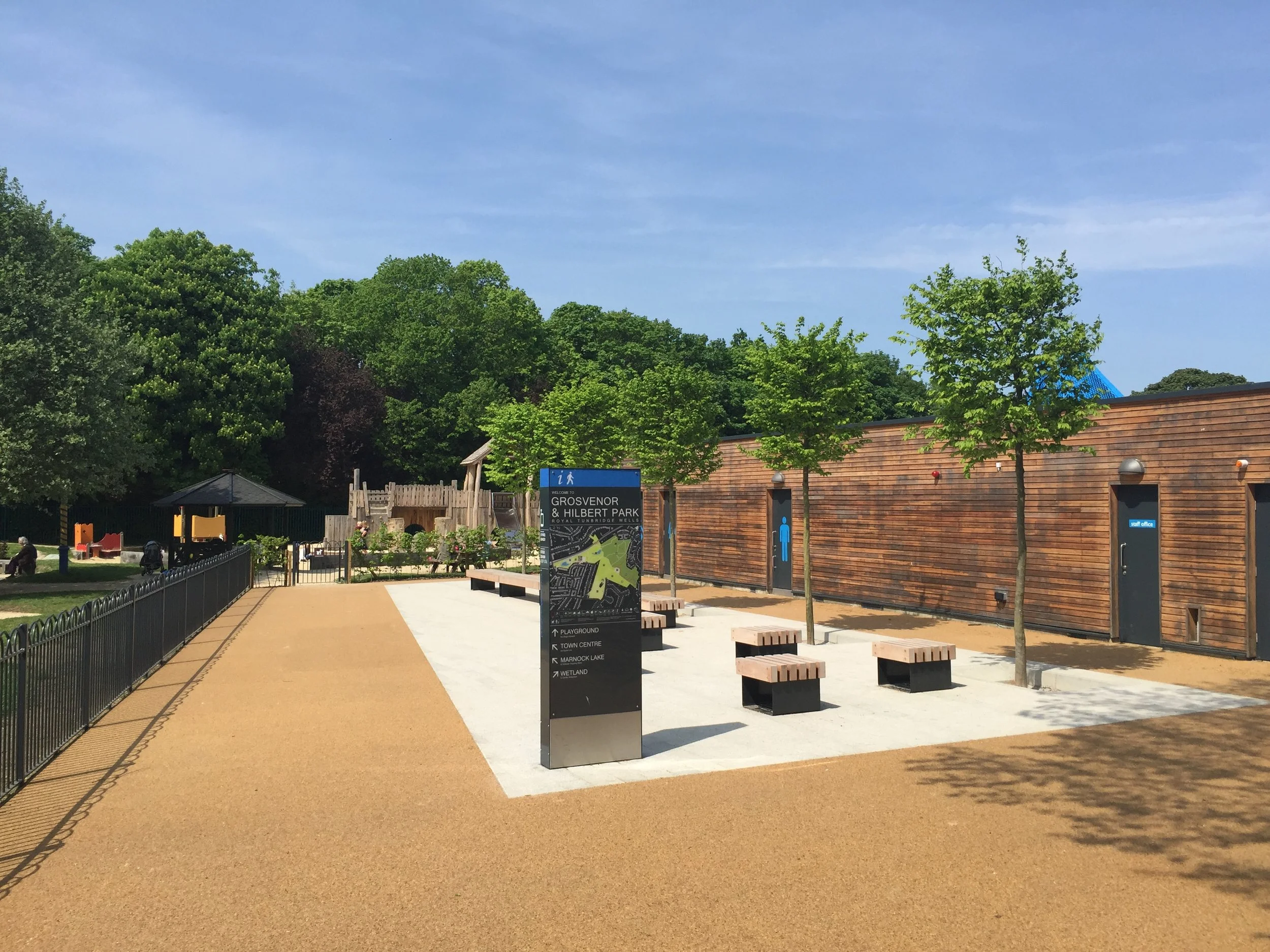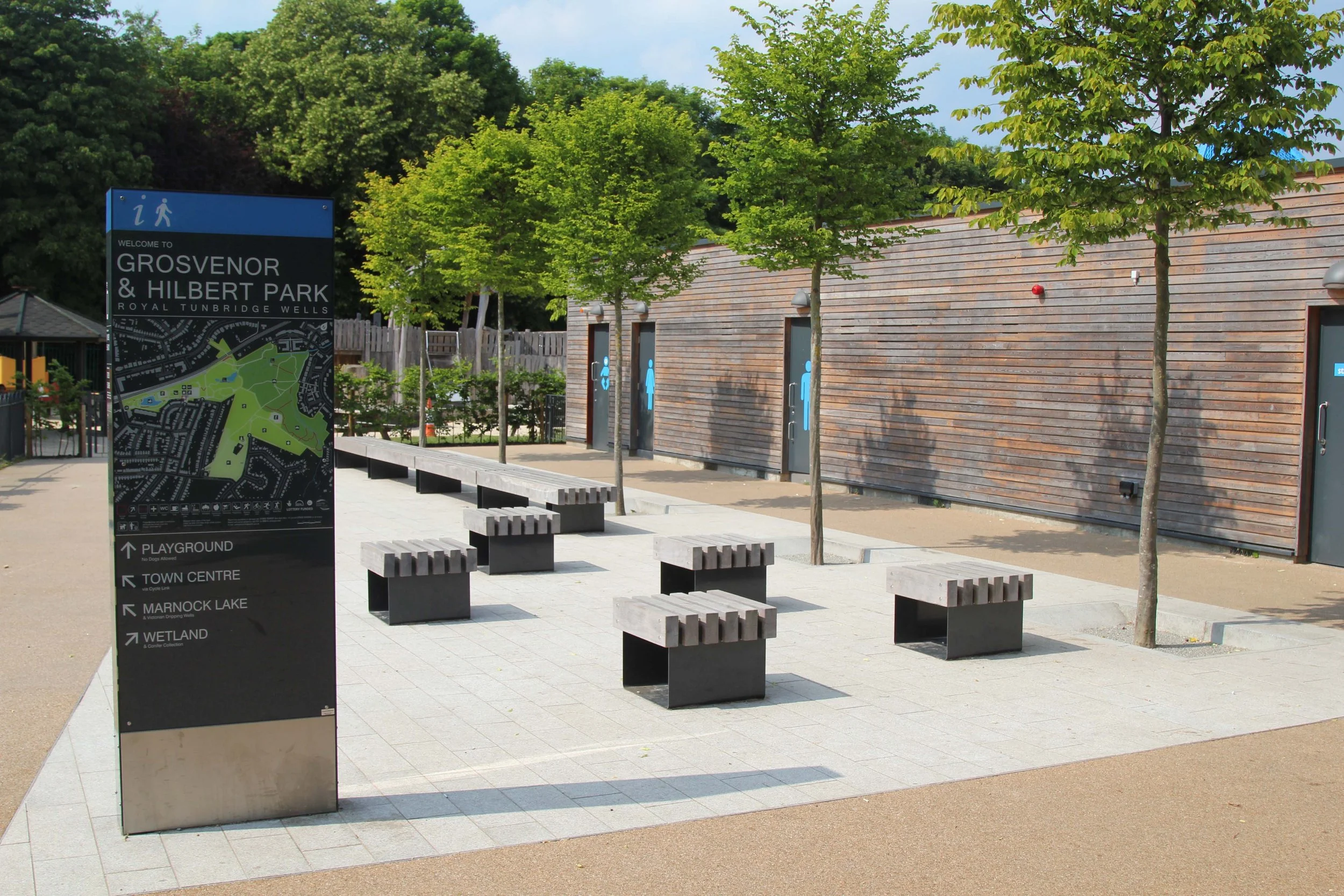Grosvenor & Hilbert Park
Client: Tunbridge Wells Council
Landscape Architect: Allen Scott
Cost: £1.1 million
Duration: 11 months
Location: Tunbridge Wells
The Grosvenor Recreation Ground was Tunbridge Wells’ first public park. It was opened in 1889 on the site of the former Calverley Water Works, engineered by William Hilbert.
In 1931 William Hilbert’s grandson, Cllr E.J. Strange, bought the “Charity Farm” lands to the north east, and presented them to the council. He requested they be named Hilbert Recreation Grounds after his mother, Lydia. This land also includes the Hilbert Recreation Ground Allotments
Blakedown Landscapes’ remit was to restore parts of the park to their original historic condition as well as introduce new exciting features. The large project was constructed around a busy well-used park and initially had the building contractor refurbishing The Hub building at the same time.
The works:
New granite paving and walls around the newly refurbished café and Hub
New resin bound paving to the Hub and Rochdale entrance
Slot drainage and connections to several locations
Railings to the Hub and bowling green
Tree and shrub planting throughout the park
New compound with bespoke containers and fencing
New entrance created by refurbishing entrance piers and installing new gates in two locations
New street furniture
Clay bund created to create a wetlands, including timber boardwalk and viewing platforms. New concrete weirs and planting
Restoration and rebuilding of brick walls
Restoration of grottos and extended walls
New concrete re-enforced path
New natural stone steps
New park signage
Granite sett entrances
Tar and chip surfacing to existing paths
Further information:
The park opening was very well received with a large community fun day. The friends group who were very active during the whole process were thrilled with the new park.
The challenging scheme required careful planning to ensure the safety of the park users whilst being able to rebuild the park and some of the very busy access routes. The scheme was also delivered during a very wet winter which also made the environment very challenging especially given the many natural springs on site.






